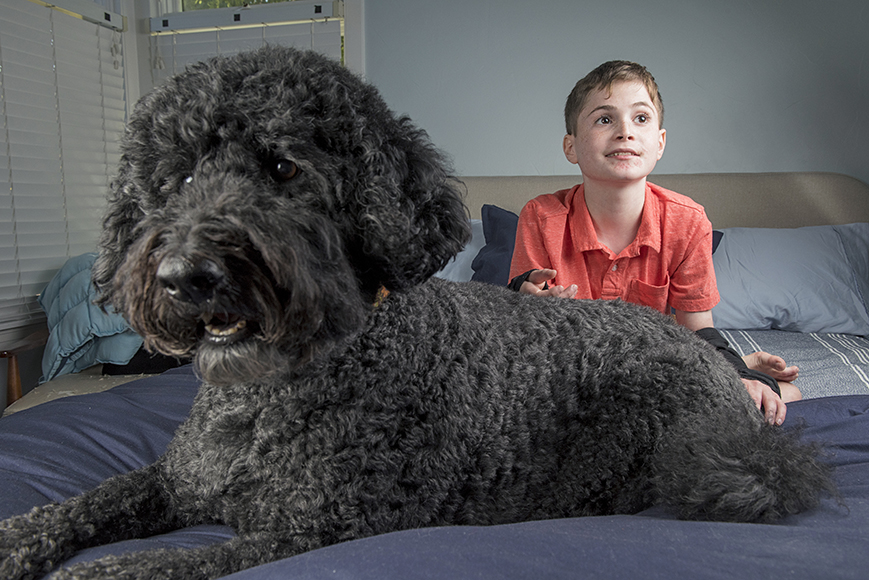Doctors told Sunny Polito her son, Campbell, wouldn’t walk or speak. They said he was unteachable.
Campbell’s regressive autism caused him to lose developmental milestones like feeding himself and talking when he was 18 months old.
“Our journey has been about ‘let’s prove them wrong,’ ” Polito says.
Hope — a black labradoodle — has been instrumental in Campbell’s progress. The capable autism service dog received $18,000 worth of training to help kids who struggle interacting with the world. She accompanies therapist Dalton Pfiffner at Lakewood’s Therapeutic Movements, an occupational and physical therapy practice that works with a wide range of children, many of whom are on the autism spectrum like Campbell.
“He is comfortable talking to others, engaging with other people, comfortable talking about the dog,” Polito says. “Dalton has phenomenal insight. She helps him communicate with people and teaches life skills.”
Hope originally had a job with the Golden family, but she was so effective that she worked herself into unemployment. She assisted Gray Golden, who struggled leaving the house with his family, as he was known to run away, throw himself on the ground or lash out at others.
She provided an anchor for Gray, steadying him emotionally and physically. She was tethered to him and stood firm when he tried to run or lose control. Eventually, Gray no longer needed Hope to be out in the world, and Hope returned to being a pet.
But she was despondent. She bummed around the house lazily while everyone else was at school or work, her previously engaged mind listless.
One day, she sprinted out of the house and jumped in the car uninvited, eager to catch a ride somewhere and just do something.
They thought about returning her so she could help another child, but she was a member of the family by this point. Pfiffner had been Gray’s therapist for a number of years, and one day asked if the family thought Hope could have a career at the clinic.
“She would love to go back to work,” said Rhoni Golden, Gray’s mother.
Now Pfiffner picks up Hope a few days a week and takes her to the clinic, where she has a number of roles. She helps create distractions if children become upset, blowing in their face or rolling on her back. She also accompanies children on outings into the community, as Pfiffner works with them on interacting with strangers and other life skills.
“She laughs; I feel comfortable, feel good,” Campbell says of Hope. “She makes me crazy, crazy in a good way.”
Hope provides a conversation piece for the children. They can talk to others about the US Service Animals rather than themselves, which is an important aid for children who struggle with interpersonal communication and social norms. Hope accompanies her clients on trips to Starbucks or Whole Foods, where they chat with employees.
“Dogs provide a way to be connected. They don’t expect anything. They are not asking him to do anything, but give so much back,” Polito says. “A dog doesn’t care if he doesn’t look him in the eyes.”








